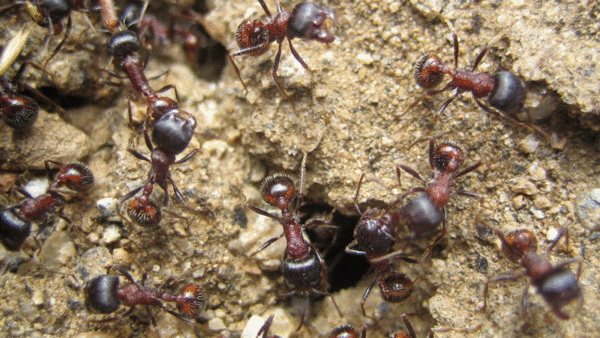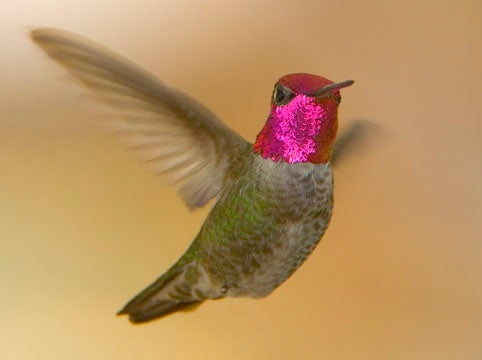Research

- Motte Rimrock Reserve Staff
Below are abstracts for some recent and ongoing research projects at the Motte Rimrock Reserve. To conduct research at the Reserve, fill out an Online Research Application.
The Motte Rimrock Reserve serves as one of seven core reserves permanently dedicated to monitoring and conserving the Stephens' kangaroo rat (SKR) and other species throughout western Riverside County. In total these reserves encompass over 41,000 acres, including over 12,500 acres of SKR occupied habitat. The SKR Reserve System was established in March 1996 when the Riverside County Habitat Conservation Agency (RCHCA) adopted a Long-Term Habitat Conservation Plan (HCP) for the SKR. The HCP document was approved by the U.S. Fish and Wildlife Service and the California Department of Fish and Game on May 6, 1996. Motte Reserve biologists conduct quarterly monitoring studies of the SKR and continue to participated in ecological and population genetic studies. In fact much of what is currently known about the biology of the SKR was gained from studies conducted on the Reserve by Dr. Mary Price and colleagues in the 1980's and early 1990's. The Motte Reserve is an active participant in the Reserve Managers Coordinating Committee (RMCC) where biological, social, and political issues germane to the management and conservation of the SKR and other sensitive species are addressed in an open forum. More information on the SKR HCP and the RCHCA can be found at the RCHCA's website: http://www.skrplan.org/.

- Brittany Enzmann, Dept of Ecology and Evolutionary B
I am investigating variation in a colony founding trait of Pogonomyrmex harvester ants. This trait concerns how single queens initiate new colonies after mating. Some species have queens that rely solely on their body reserves when initiating a new colony (termed claustral), while some species have queens that also forage for additional food (called semi-claustral). Finally, some species have both claustral and semi-claustral queens. I am interested in the costs and benefits of each of these strategies, particularly the production costs that each strategy incurs on the natal colonies of queens. I am also interested in determining whether this trait is socially controlled by the colony or if it is the result of genetic polymorphism.

on invasive plant primary productivity - Dr. Edith Allen, Dep
We are monitoring atmospheric nitrogen deposition to coastal sage scrub and creosote scrub ecosystems through the use of passive air samplers and branch washing. Southern California has high emissions of nitrogen oxides from automobiles, that in turn are deposited to plants and soils as nitrogen fertilizer. This causes an increase in productivity of invasive annual grasses, which cause more frequent fires and reduce the conservation value of wildlands.

Department of Biology, California State University, Fullerton
Learned song has been studied extensively in oscine songbirds, but less is known about the other avian groups with learned song, parrots and hummingbirds. Anna’s hummingbird (Calypte anna) and Costa’s hummingbird (Calypte costae) have distinctly different songs despite being sister species with overlapping ranges and habitats. Anna’s hummingbird has a complex, learned song compared to the simpler, possibly innate song of Costa’s hummingbird. We hypothesize that male Anna’s hummingbirds are under strong sexual selection for complex song. Up to thirty adult male Anna’s hummingbirds will be measured (mass, wing chord, gorget and tail size), banded, and tagged with a Passive Integrated Transponder. The latter will allow us to identify individual males, so that we can record their singing and territorial behavior over the breeding season. We predict that males with more complex songs will be larger, with larger gorgets and longer tails. We further predict that these males will hold larger territories with more flowering plants. The results of this research will lead to a better understanding of song evolution in the genus Calypte and, more generally, of avian song evolution. Secondarily, we will be testing the efficacy of PIT tags for monitoring individual hummingbird behavior, something that has not been reported in the literature. This technology has enormous potential for studies of territorial behavior, migration and population dynamics of hummingbirds.

